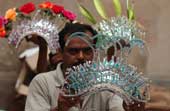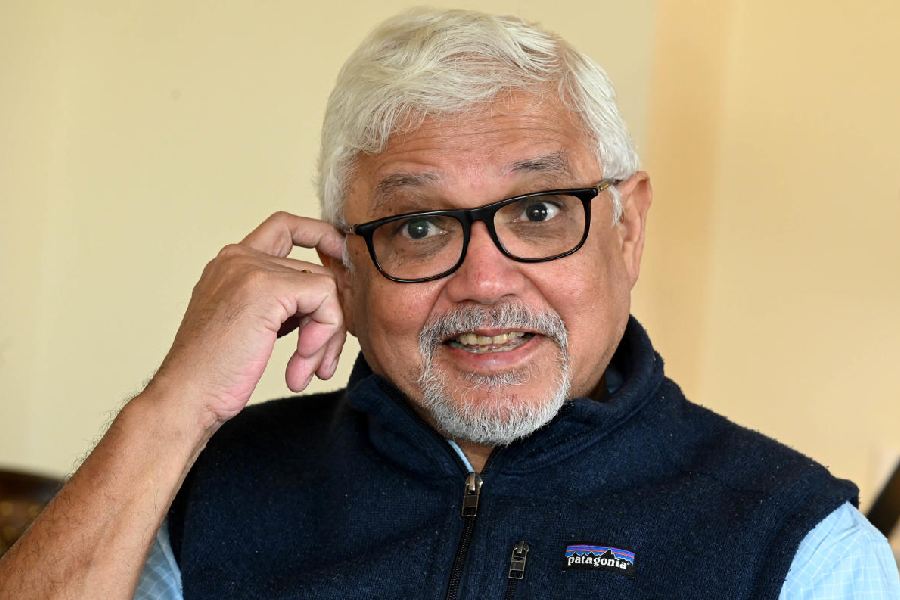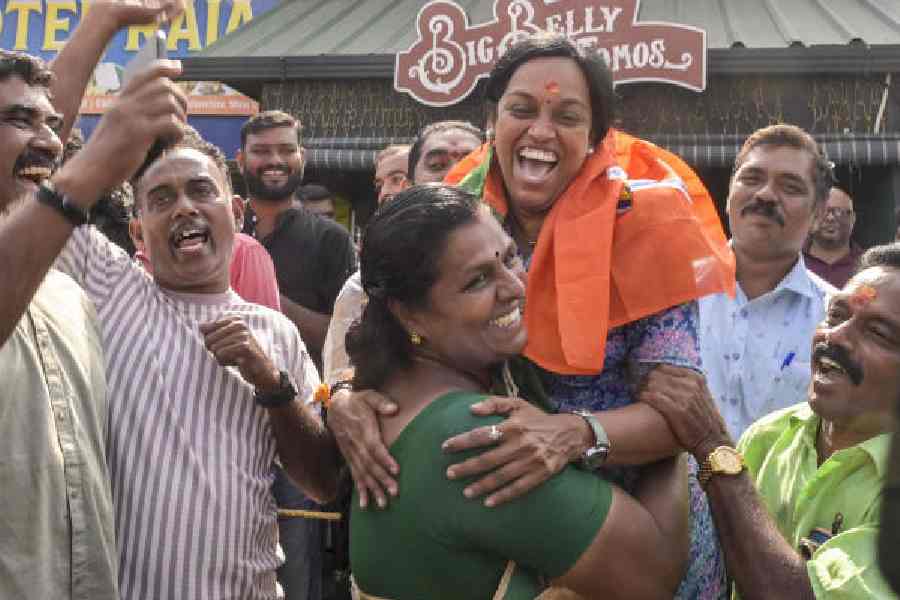 |
| CARNIVAL CUTS: Ashish Bagchi displays some of the headgear he has fashioned for the festival. Picture by Amit Datta |
Daker saaj, but not for the devi. A parade, but not for bijoya… A carnival along the Thames, inspired by the crafts of Bengal and the Caribbean, will see gleaming wire-and-beadwork worn by hundreds of dancers taking part in the procession. And behind the 10 different kinds of creations travelling to England is Ashish Bagchi of Krishnagar.
Din Shuru, an Indian Carnival, participating in the prestigious Mayor’s Thames Festival in September, will be touring the UK from July, for events like the Isle of Wight and Notting Hill Carnivals, and The Canterbury Festival, before returning to Calcutta on December 21 for a riverfront festival on the Hooghly. Kinetika, a cultural outfit behind Din Shuru, believes “the birthplace of the carnival is Calcutta”, as Indians who had immigrated to the West Indian island had a strong influence on its culture. “The wire-work of carnival headgear is typical of Calcutta, not Trinidad,” explains Alison Pretty, artistic director of Kinetika.
Bagchi, who has never left Bengal’s shores, will make the journey to England to show off his craft. The sparkling creations in silver and gold, dappled with blue and pink, green and red, include head-dresses, trishuls, umbrellas and other ornaments, fashioned from galvanised wire and multicoloured beads. Over 30 artisans from Nadia town are putting together the stunning array, combining elements of Bengal and Trinidad. Creations in shola (pith) will also be part of the touring carnival, while a floating display of Chandernagore’s famous lighting will be the festival centrepiece.
“This is the first time I am making these things to be worn by people,” smiles the 33-year-old. Apart from scaling down the size, so they will be light enough to be worn even by children, Bagchi has had to tailor his work to suit the occasion. “We usually use bare iron wire wrapped in rags as the base. But because of the London rains, we have had to use galvanised wire, which is less malleable,” explains the artiste, who has his own “factory” at home, employing at least 10 others. “Rolex” is what they call the shiny cellophane paper integral to the “zari” designs.
Everywhere, there is evidence of the cross-cultural canvas of the carnival. Like one bright head-dress with green peacock plumes. “These symbolise the sugarcane that is grown in the West Indies,” explains the unlettered man. The designer had met Pretty during her visit to Calcutta last year, where they had decided the kind of look they wanted. “She showed me a video of various carnivals, since I had never seen them before. Then she told me about the connection with Trinidad,” recounts Bagchi. While the greatest regret for the first-generation craftsman is “not completing his graduation”, he is eager to share his knowledge with audiences in England. He is to conduct workshops in London schools. “I don’t know much theory,” says Bagchi shyly, “but I do want to show them how we make our crafts.”











